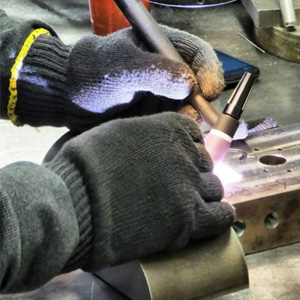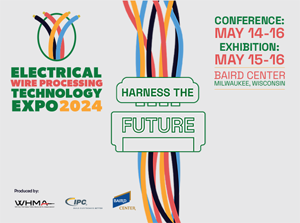 In the world of welding, precision and durability are key to producing high-quality results. While traditional welding techniques have long been the industry standard, advancements like Microscopic Tungsten Inert Gas (TIG) welding are proving to be game-changers, especially in industries where extreme precision is required. This article explores the benefits of Microscopic TIG welding compared to traditional welding methods.
In the world of welding, precision and durability are key to producing high-quality results. While traditional welding techniques have long been the industry standard, advancements like Microscopic Tungsten Inert Gas (TIG) welding are proving to be game-changers, especially in industries where extreme precision is required. This article explores the benefits of Microscopic TIG welding compared to traditional welding methods.
1. Superior Precision
Microscopic TIG welding allows for unparalleled precision. The process uses a non-consumable tungsten electrode, which provides fine control over the weld. This is crucial when working with tiny or intricate components where traditional welding might cause excessive heat distortion or misalignment. The microscopic scale of the TIG process enables welders to create detailed, high-quality joints that are much smaller than those possible with standard welding techniques.
Industries That Benefit:
- Medical Devices: Precise welds are essential for medical implants and instruments.
- Electronics: Tiny, delicate circuits and microchips benefit from the control Microscopic TIG offers.
- Aerospace: Highly sensitive components require welds that don’t compromise structural integrity.
2. Cleaner Welds
Traditional welding often produces spatter and contamination that can lead to post-weld cleaning and finishing work. In contrast, Microscopic TIG welding results in cleaner welds, reducing or even eliminating the need for additional clean-up. This is largely due to the inert gas (typically argon) shielding the weld area, which prevents oxidation and contamination during the welding process.
Key Benefits:
- Minimal Post-Weld Cleaning: Saves time and effort.
- Reduced Contamination: Vital for industries like food production and pharmaceuticals.
3. Better Control of Heat Input
Heat management is critical in welding, particularly for materials that are prone to warping or cracking under high temperatures. Microscopic TIG welding gives operators fine control over the heat applied, making it ideal for thin or heat-sensitive materials. This is a major advantage over traditional welding methods, where heat control is more difficult, increasing the risk of material damage.
Material Applications:
- Thin Metals: Perfect for delicate metals like aluminum or titanium.
- Heat-Sensitive Materials: Prevents overheating, preserving the integrity of the workpiece.
4. Strong and Durable Welds
Despite its small scale, Microscopic TIG welding creates strong, durable welds that can withstand extreme conditions. This strength is due to the precise control over both the heat and the weld pool, ensuring consistent and uniform penetration. Unlike some traditional methods, which may leave behind weaker joints or imperfections, Microscopic TIG welding delivers robust results, even in high-stress environments.
Benefits in Key Industries:
- Aerospace and Aviation: Reliability and durability are crucial in welds for safety and performance.
- Automotive: The method can be used in areas where high strength and resistance to stress are required.
5. Versatility Across Materials
Microscopic TIG welding is highly versatile and can be applied to a broad range of metals, including stainless steel, titanium, aluminum, and copper. This flexibility makes it a go-to option in industries where different materials are often used together. Traditional welding methods can sometimes struggle with this variety, requiring different processes or tools for different metals, whereas Microscopic TIG welding adapts seamlessly.
Common Uses:
- Custom Fabrication: For intricate designs and prototypes across multiple industries.
- Repair Work: Fixing micro components without needing full replacements.
6. Non-Consumable Electrodes
Traditional welding often relies on consumable electrodes, which must be frequently replaced during the process. This can slow down production times and increase costs. Microscopic TIG welding uses a non-consumable tungsten electrode, meaning the welder can work for longer periods without interruption, boosting productivity and lowering material costs over time.
Cost Efficiency:
- Less Frequent Electrode Replacement: Reduces ongoing material costs.
- Increased Productivity: Longer work sessions without stopping to replace components.
7. Environmentally Friendly
Microscopic TIG welding’s clean process also makes it an environmentally friendlier option. The precision of the technique minimizes waste and material use, and the clean, spatter-free results require fewer harmful chemicals for cleaning and finishing. This positions Microscopic TIG welding as an eco-conscious choice for companies looking to reduce their environmental footprint.
Conclusion: Microscopic TIG Welding – The Future of Precision Welding
Microscopic TIG welding has clear advantages over traditional welding methods in terms of precision, cleanliness, heat control, and versatility. Its ability to create strong, durable, and clean welds on a microscopic scale is invaluable for industries requiring high performance and reliability. As technology continues to evolve, this advanced welding technique is becoming a preferred choice for professionals across a range of sectors, from aerospace to electronics.
If you’re in a field that demands impeccable detail and high-quality results, Microscopic TIG welding is the superior choice.


